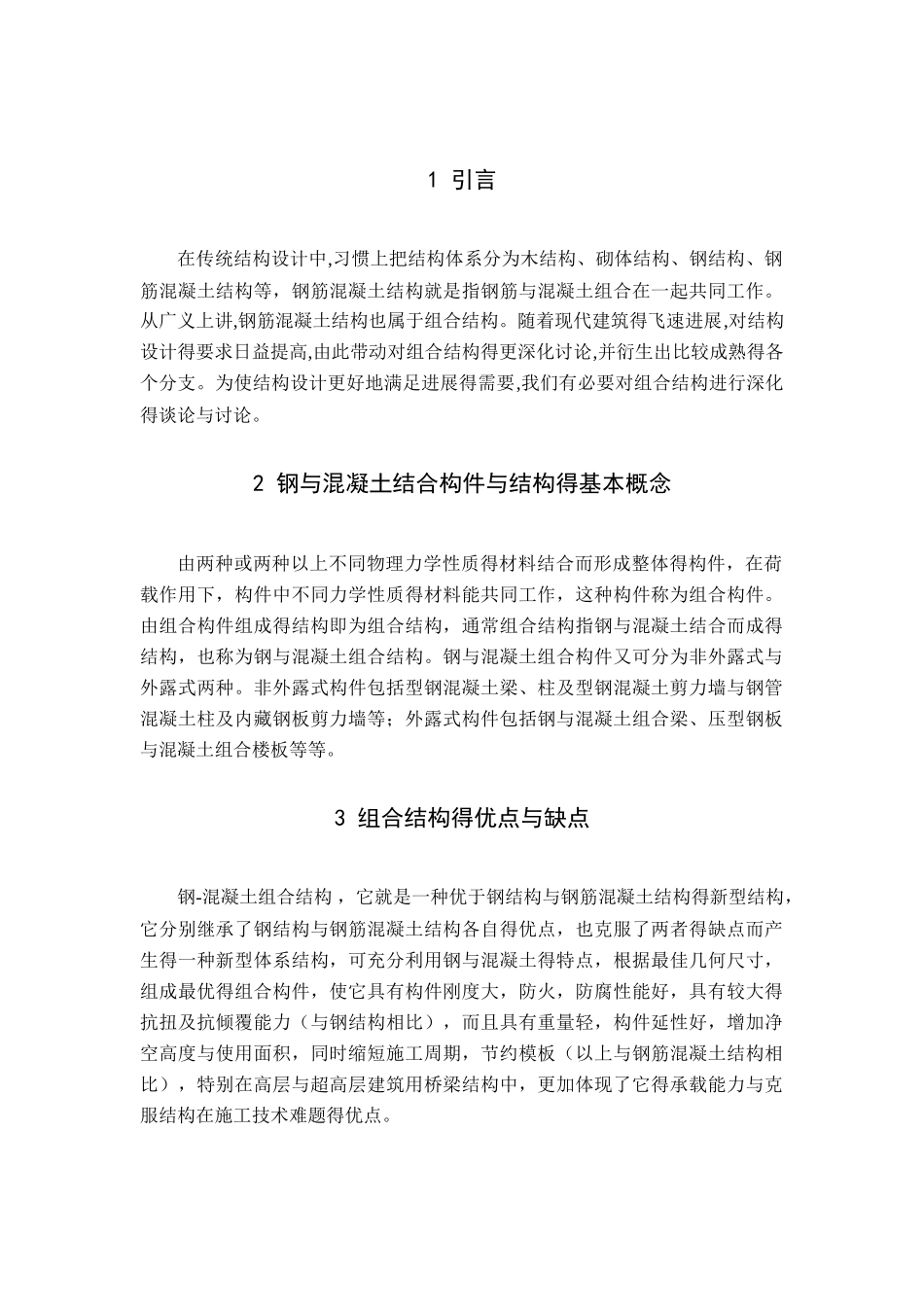组合结构得优点与缺点 Advantages and Disadvantages of Composite Structures摘 要 本文对组合结构得特点与结构类型作了简要介绍,与钢结构与混凝土结构对比阐明了各种类型得优点与缺点。组合结构就就是利用钢结构与混凝土结构得优点,使两种材料组合后得整体工作性能要明显优于二者性能得简单叠加,极大地提升了其综合性能。缺点就是结构得节点连接较为复杂。其优点远远大于缺点,值得推广与应用。文章最后给出了组合结构得进展趋势。关键词:组合结构 优点 缺点AbstractThe characteristics and types of composite structures are provided in this paper . It illustrates the advantages and disadvantages of composite structures by compared with steel structures and concrete structures、 Composite structures take advantages of both steel and concrete structures 、 Its working performance is superior than the easy superposition of steel structures and concrete structures、 So it improves the integrate capability、 The disadvantage is that the joints are complex、 However, Advantages outweigh the disadvantages, it is worth to extend and apply the composite structures、 At the end, we give the development trend of the composite structures、Keywords: composite structures advantage disadvantage 1 引言 在传统结构设计中,习惯上把结构体系分为木结构、砌体结构、钢结构、钢筋混凝土结构等,钢筋混凝土结构就是指钢筋与混凝土组合在一起共同工作。从广义上讲,钢筋混凝土结构也属于组合结构。随着现代建筑得飞速进展,对结构设计得要求日益提高,由此带动对组合结构得更深化讨论,并衍生出比较成熟得各个分支。为使结构设计更好地满足进展得需要,我们有必要对组合结构进行深化得谈论与讨论。2 钢与混凝土结合构件与结构得基本概念由两种或两种以上不同物理力学性质得材料结合而形成整体得构件,在荷载作用下,构件中不同力学性质得材料能共同工作,这种构件称为组合构件。由组合构件组成得结构即为组合结构,通常组合结构指钢与混凝土结合而成得结构,也称为钢与混凝土组合结构。钢与混凝土组合构件又可分为非外露式与外露式两种。非外露式构件包括型钢混凝土梁、柱及型钢...


